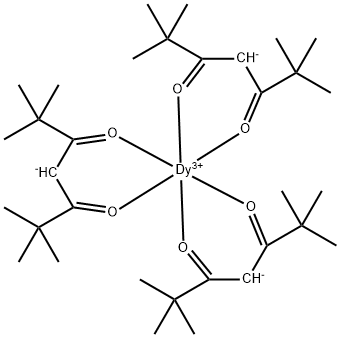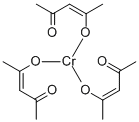CALAMUS OIL
- CAS NO.:8015-79-0
- Molecular Weight: 0
- MDL number: MFCD00678554
- Update Date: 2024-12-18 14:08:52
What is CALAMUS OIL?
Chemical properties
Calamus oil (sweet flag oil) is obtained by steam distillation of fresh or
unpeeled, dried roots of Acorus calamus L. (Araceae). It is a yellow to medium
brown, moderately viscous liquid with a pleasant, spicy, aromatic odor.
Calamus oil is used in perfumery for spicy, herbaceous notes.However, its use is
restricted because of the toxicity of β-asarone (see corresponding IFRA standard).
In some countries (e.g., the United States, EU), the use of calamus oil is banned
for application in food flavorings and in food. Due to these problems, the oil is
produced just on a very small scale, for example, in India.
Chemical properties
The essential oil is obtained by steam distillation of dried rhizomes. Depending on the origin, it exhibits varying physical– chemical constants. The oil has a warm, camphor-like odor. The flavor of the calamus oil is equally warm-spicy, yet slightly bitter with a slowly growing, pungent aftertaste. The Indian-type oil is obtained by steam distillation of the fresh root or unpeeled dried root.
Physical properties
The European essential oil is a yellow-brownish liquid. The Indian-type oil is yellow-brown.
The Uses of CALAMUS OIL
In perfumery; as moisturizer in skin and hair preparations. Has been used as a flavoring ingredient and cooking spice.
Definition
Extractives and their physically modified derivatives. Acorus calamus, Araceae.
brand name
Acore vrai;Oil of calamus;Sweet flag root.
World Health Organization (WHO)
Calamus, the dried rhizome of acorus calamus, has been used as a bitter and carminative. The World Health Organization has no information further to the above regarding preparations containing calamus or to indicate that they are still commercially manufactured.
Pharmacology
European Oleum Calami (from A. calamus) demonstrated strong spasmolytic
properties when tested on smooth muscle of isolated rat and rabbit intestine, cat trachea, rabbit
aorta and rat uterus, and reduced guinea-pig mortality caused by histamine inhalation from 83
to 16% (Maj, Malec & Lastowski, 1966).
The essential oil of Indian A . calamus showed anticonvulsant, antiveratrinic and anti-arrhythmic
activity (Madan, Arora & Kapila, 1960). Like quinidine, it combated experimental auricular fibrillation
in dogs, prolonged the conduction time and refractory period in the electrocardiogram in
cats, antagonized the action of dilute solutions of veratridine on frogs (Rana tigrina) and had an
anticonvulsant action against experimental shock, but was not effective in modifying convulsions
produced by metrazole.
At concentrations of 50-100 μg/ml the essential oil of A . calamus (European) produced spasmolytic
effects, considered to be chiefly myotropic, on isolated smooth muscles from rabbits, guinea-pigs
and cats (Shipochliev, 1968a). A 5% emulsion of this oil given iv to cats in a dose of 5-10 mg/kg
in physiological saline increased respiratory volume and depressed blood pressure, while guinea-pigs
given the oil ip in a dose of 35 mg/kg after preliminary sensitization with egg albumin went into
anaphylactic shock (Shipochliev, 1968a). General depression without ataraxia was observed in mice
given ip injections of 50 mg/kg as the 5% emulsion, with or without preliminary ip treatment with
150mg iproniazid phosphate/kg 24 hr earlier. The effect on the central nervous system did not
resemble that of reserpine (Shipochliev, 1968b).
An oleoresin from rhizomes of Indian A . calamus injected ip into mice at 0.2 g/kg showed only
slight sedative activity but considerable potentiation of the sedative activity of sodium pentobarbitone
(Dandiya et al 1958).
The steam-volatile fraction of the roots and rhizomes of Indian A. calamus reduces the body
temperature of mice and prolongs sleeping time when used with pentobarbitone, hexobarbitone
and ethanol. It exacerbates the tonic seizures provoked by convulsive doses of metrazole in rats
and potentiates the action of reserpine in reducing amphetamine toxicity in mice excited by aggregation.
In anaesthetized cats, iv injection of the oil causes a fall in blood pressure which is not
prevented by vagal, adrenergic, or ganglionic blockade and does not appear to be due to any
nervous mechanism. The oil causes dilation of the blood vessels of the splanchnic area in cats,
constricts the blood vessels of the hind legs of frogs, and prevents the action of acetylcholine,
histamine, and barium chloride on isolated guinea-pig ileum (Dandiya & Cullumbine, 1959).
Indian acorus oil (50 mg/kg) potentiated pentobarbitone hypnosis in mice; the potentiating action
was antagonized by LSD and dibenzyline hydrochloride either separately or combined (Malhotra,
Das & Dhalla, 1962). The same dose delayed the rate of disappearance of sodium pentobarbitone
from the blood in dogs.
The content of 5-hydroxytryptamine and noradrenaline in the rat brain was depleted by ip injection
of Indian acorus oil (100 mg/kg), and it has been suggested that the mechanism of action of the
oil may be similar to that of reserpine (Malhotra, Prasad, Dhalla & Das, 1961).
In subacute and acute experiments in mice, rats, cats and rabbits, the essential oil from A . calamus
(European) exerted a significant sedative and analgesic effect, reduced spontaneous mobility, potentiated
the effect of morphine, caused ptosis and reduced body temperature and blood pressure
(Maj, Malec & Lastowski, 1964). Enhancement of the. effect of barbiturates did not result from
changes in barbiturate metabolism. The oil did not exert cataleptic effects nor reduce the toxicity
of amphetamine, and its effect was not influenced by iproniazid, as was characteristic of the oil
of Asiatic origin. The oil studied was 12-16% as toxic as the Asiatic oil.
Aqueous and alcoholic extracts of the rhizomes of A . calamus (European) were administered ip
to mice, rats, rabbits, and cats by Maj, Lastowski & Lukowski (1965). The aqueous extract had
a sedative effect in mice in doses up to 4 g/kg. The minimum lethal dose of the alcoholic extract
in mice was 4 g/kg and the L D 1 00 was 8 g/kg. The extracts had no cataleptic or analgesic action
in mice in doses up to 1? g/kg, did not potentiate the cataleptic action of chlorpromazine and
did not show anticonvulsant action in mice and rats. Their effect was not influenced by iproniazid,
but they did exhibit hypothermic and hypotensive activity. Only the alcoholic extract potentiated
the action of narcotics and diminished the toxicity of amphetamine in mice housed in groups.
Both extracts administered in doses of 10-400 mg/kg lowered blood pressure in rabbits and cats
by 10-70% (Maj et al. 1965).
Indian acorus oil (10-100 mg/kg) administered ip was found to have a sedative-tranquilizing action
when administered ip to rats, mice, cats, dogs and monkeys, but vomiting was observed in the
latter three species (Dhalla & Bhattacharya, 1968). Acorus oil (10-150 mg) given ip to mice depressed
both spontaneous and forced motor activities, with a greater effect on the former. In cats, flexor,
patellar and lingomandibular reflexes were inhibited to a varying degree by iv injection of 10-100 mg
acorus oil/kg, while the drug did not block the neuromuscular junction or the facilitation of patellar
response due to the stimulation of reticular formation. At 0-5 mg/ml, acorus oil inhibited monoamine
oxidase activity and stimulated D- and L-amino acid oxidases in vitro. It was suggested that acorus
oil might effect its neuropharmacological actions at the spinal cord or subcortical levels of the
central nervous system (Dhalla & Bhattacharya, 1968).
Anti-adrenergic activity of Indian acorus oil in the central nervous system was demonstrated
by its action in antagonizing the agitational symptoms induced by dexamphetamine in mice, cats,
rats, dogs and monkeys, and by the dexamphetamine blockage of its potentiating action on hexobarbitone
sleeping time (Bhattacharya, 1968). The oil inhibited the conditioned avoidance response
in rats, the effects being more prominent at dose levels inhibiting also the unconditioned response,
suggesting some type of ataxic motor impairment (Bhattacharya, 1968).
Anticancer Research
A. calcamus is one of the important herbs known for its immense medicinal potential.It is an aromatic herb with the creeping rhizome locally known by variousnames like Bachh and Sweet Flag, belongs to taxonomic family Acoraceae (Meenaet al. 2010). It has a diverse range of pharmacological properties including the treatmentof diseases like cancer, ulcer, hepatitis, spasm, schizophrenia, gout, arthritis,and anorexia (Singh et al. 2011; Ranjan et al. 2016). It is the source of innumerablephytoconstituents such as glycosides, tannins, alkaloids, saponins, flavonoids, phenols,and lectins. The essential oils obtained from this herb constitutes several volatilecompounds such as calamene, calameone, calamenenol, α-pinene, β-pinene, p-cymene, camphene, eugenol, methyl eugenol, methyl isoeugenol, eugenyl acetate,isoeugenol, azulene, eugenol methyl ether, calamol, asaronaldehyde, dipentene,terpinolene, camphor, 1,8-cineole, caryophyllene, α-asarone, and β-asarone(Palani et al. 2009; Haghighi et al. 2017). Due to these biologically active phytocompounds,A. calamus is having a high demand, and thus overexploited. The seedset in this plant is seen rarely and inadequate; therefore, vegetative propagation isthe chief method of propagation. The plant extracts have been documented to possessanticancer activity against various human carcinoma cells (Chaturvedi andChaturvedi 2016; Haghighi et al. 2017).
Safety Profile
Poison by intraperitoneal route. Moderately toxic by ingestion. Questionable carcinogen with experimental tumorigenic data. When heated to decomposition it emits acrid smoke and irritating fumes. See also individual components.
Properties of CALAMUS OIL
| alpha | aD20 +9 to +31° |
| Density | d2020 0.960-0.970 |
| refractive index | nD20 1.507-1.515 |
| color | Volatile oil. Yellow to yellowish-brown liquid(viscid) |
| Odor | aromatic odor |
| EPA Substance Registry System | Oils, Acorus calamus (8015-79-0) |
Safety information for CALAMUS OIL
Computed Descriptors for CALAMUS OIL
New Products
4,4-Difluoropiperidine hydrochloride tert-butyl 9-methoxy-3-azaspiro[5.5]undecane-3-carboxylate Indole Methyl Resin N-Isopropylurea N,N-Dicyclohexylcarbodiimide(DCC) MELDRUMS ACID 5-METHYLISOXAZOLE-4-CARBOXYLIC ACID Magnessium Bis glycinate Zinc ascorbate 1-bromo-2-butyne 2-acetamidophenol 9(10H)-anthracenone Erythrosin B, 4-Piperidinopiperidine 2-((4-morpholinophenylamino) (methylthio) methylene) malononitrile 2,4-dihydroxybenzaldehyde 3-(4-morpholinophenylamino)-5-amino-1H-pyrazole-4-carbonitrile Methyl 2-methylquinoline-6-carboxylate 2,6-dichloro-4-nitropyridine 4-Bromo-2-chlorobenzonitrile 2-(benzylamino)acetic acid hydrochloride 4-(tert-Butoxycarbonylamino)but- 2-ynoic acid 3,4-dihydro-2H-benzo[b][1,4]dioxepine 1-Phenyl-1-cycloprppanecarboxylicacidRelated products of tetrahydrofuran








You may like
-
 8015-79-0 Oil, calamus 98%View Details
8015-79-0 Oil, calamus 98%View Details
8015-79-0 -
 8015-79-0 98%View Details
8015-79-0 98%View Details
8015-79-0 -
 3-(4-amino-1-oxoisoindolin-2-yl)-1-methylpiperidine-2,6-dione 98%View Details
3-(4-amino-1-oxoisoindolin-2-yl)-1-methylpiperidine-2,6-dione 98%View Details -
 614-19-7 98%View Details
614-19-7 98%View Details
614-19-7 -
 20677-73-0 (2,2-diethoxyethyl)methylamine 98%View Details
20677-73-0 (2,2-diethoxyethyl)methylamine 98%View Details
20677-73-0 -
 3-(4-(hydroxyamino)-1-oxoisoindolin-2-yl)piperidine-2,6-dione 98%View Details
3-(4-(hydroxyamino)-1-oxoisoindolin-2-yl)piperidine-2,6-dione 98%View Details -
 57381-49-4 2-bromo-4-chlorobenzonitrile 98%View Details
57381-49-4 2-bromo-4-chlorobenzonitrile 98%View Details
57381-49-4 -
 4,6-dichloropyrimidine-5-carbaldehyde 98%View Details
4,6-dichloropyrimidine-5-carbaldehyde 98%View Details
5305-40-8
